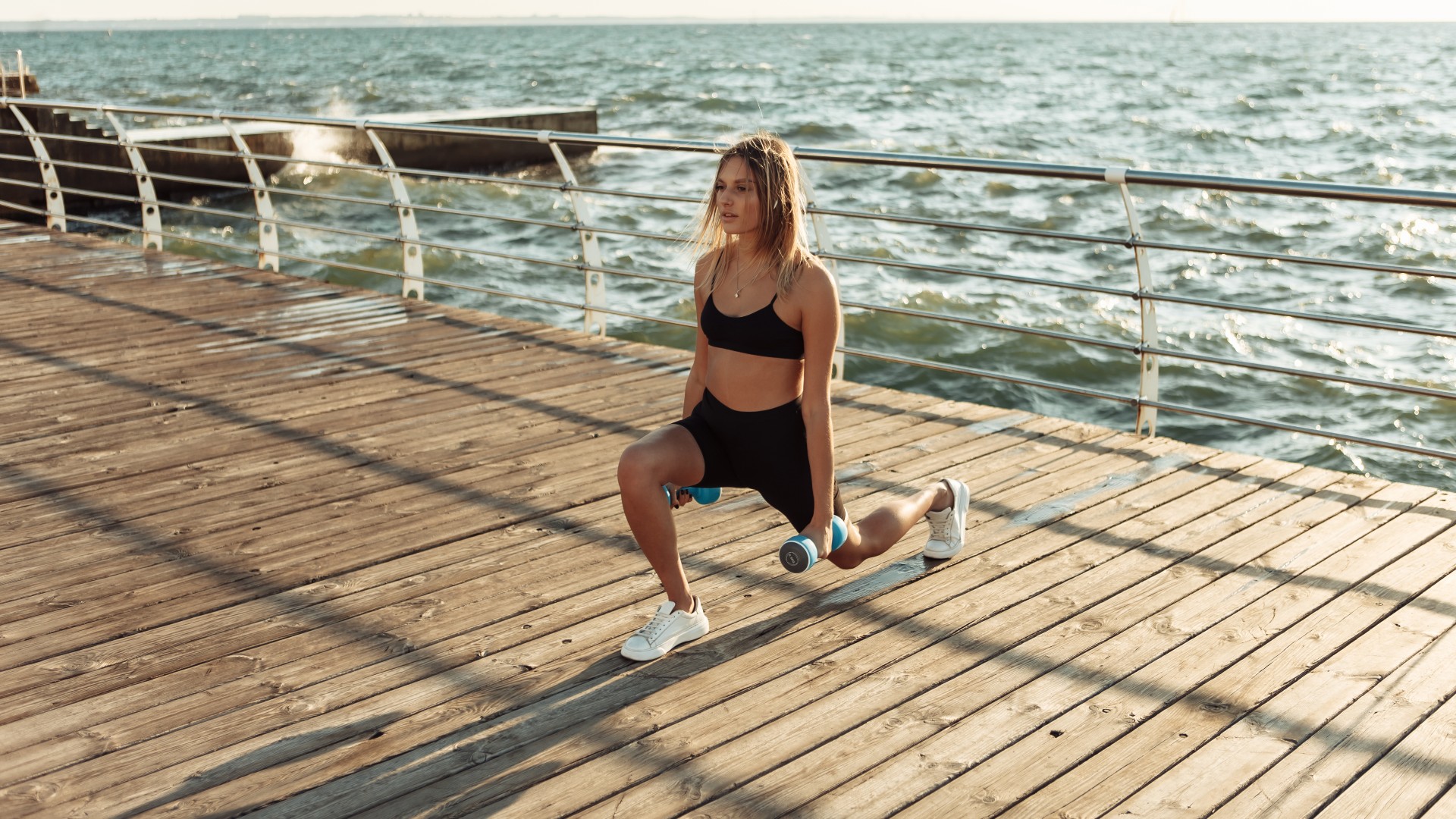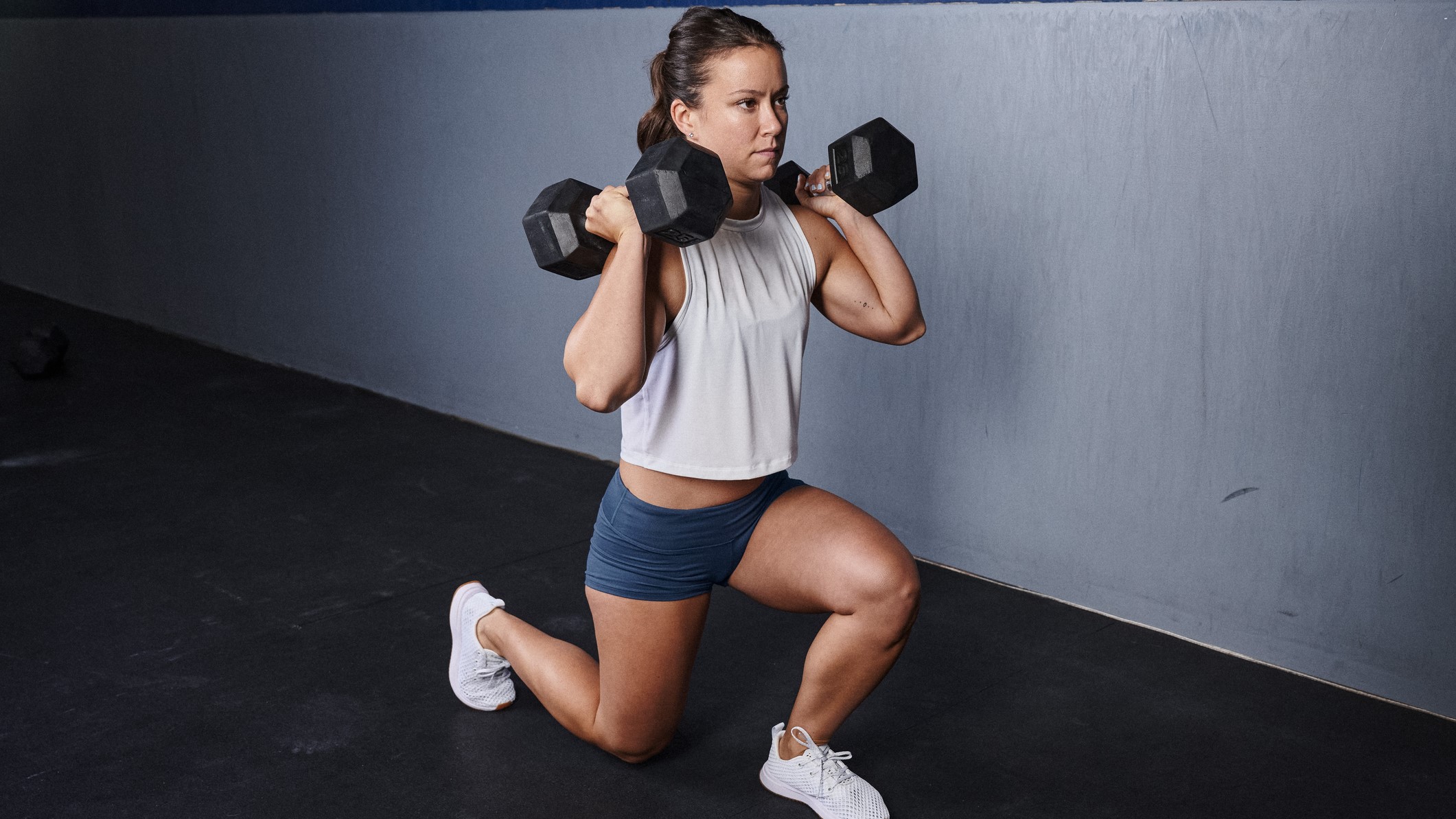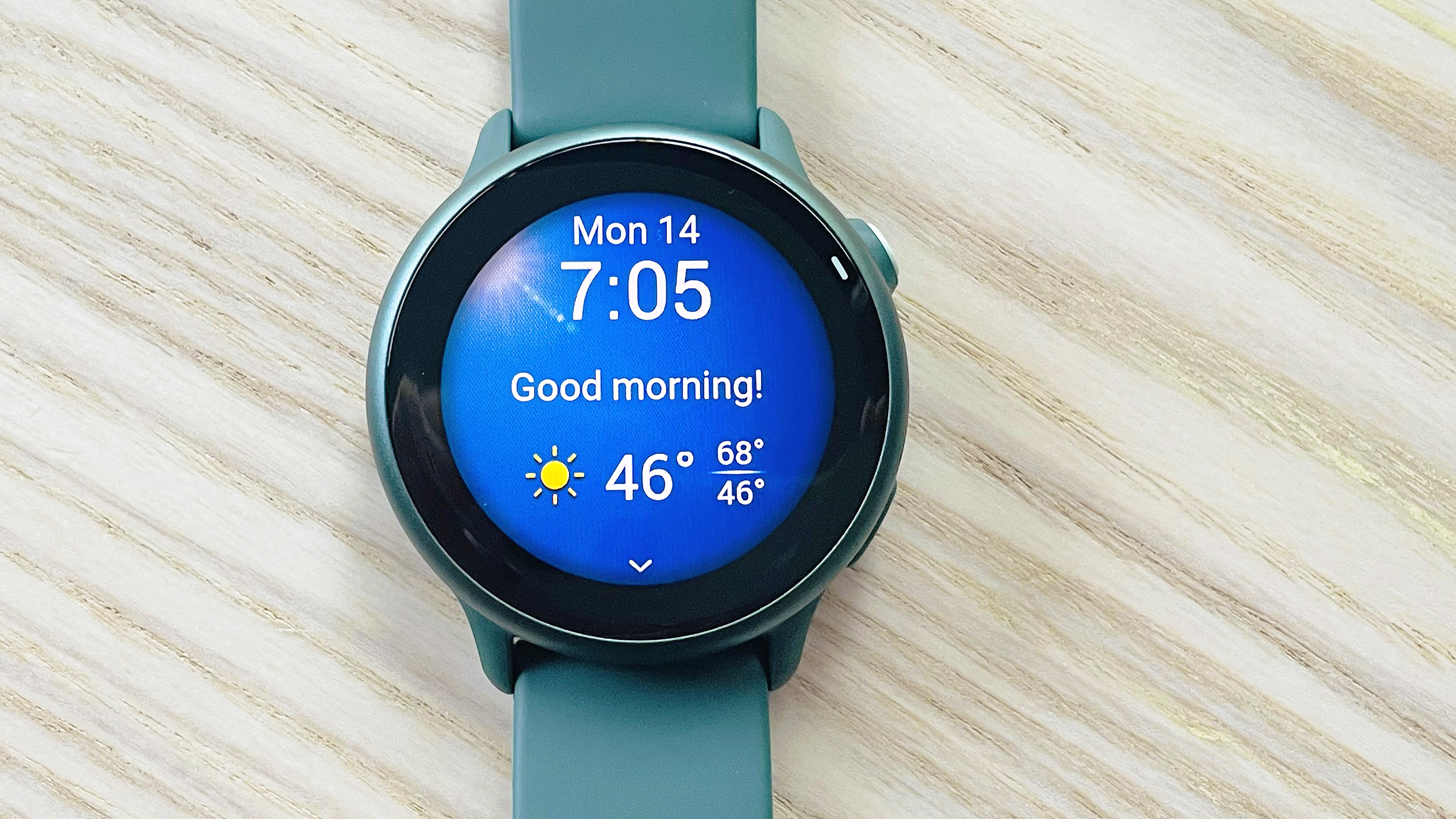
You could build and strengthen muscles all over, including your core, glutes and quads, using this 20-minute HIIT workout with dumbbells. And it’s suitable for all levels of fitness.
The conditioning workout by Talilla Henchoz is perfect for home, garden and gym workouts, and Talilla only uses one dumbbell if you’re short on equipment. You can even modify for a shorter or longer session by adding or removing rounds.
I train using some of the best adjustable dumbbells and kettlebells when working out from home, as this allows me to scale up and down depending on upper-body or lower-body exercises. Read on for the workout below, including some tips on how to get sweating even more (and why it’s killer on the quads and core).
Watch Talilla Henchoz’s 20-minute HIIT workout with dumbbells
Henchoz says, “These kinds of sweats are my fave functional fitness,” meaning the functional training style that works multiple muscle groups and helps improve the efficiency and quality of your day-to-day movement. “This is your sign to build a body for life, not just for summer.”
The full-body torcher was designed as a 40-minute workout using one dumbbell. You could add a second dumbbell to increase the intensity, and we’ve scaled it back to give you a shorter 20-minute option, but you could add or remove rounds to suit your needs.
A post shared by Talilla 🌴 Home Workouts (@talillahenchoz)
A photo posted by on
You get a combination of strength and cardio exercises with a bigger focus on the core muscles, glutes, quads and hamstrings. You’ll increase your heart rate and torch major muscle groups, activating upper body muscles too. I recommend using a medium or heavy dumbbell, but you should always lift weights suitable for your strength level.
Perform each of the seven exercises for 40-45 seconds and rest for 15 seconds. Henchoz offers one-minute rest between rounds. For a 40-minute workout, complete five rounds and decrease to two or three for the shorter option.
Sign up to get the BEST of Tom's Guide direct to your inbox.
Get instant access to breaking news, the hottest reviews, great deals and helpful tips.
Here’s the list of exercises:
- Lunge to overhead press right side
- Lunge to overhead press left side
- Alternating swings
- Stiff-leg deadlift to overhead press
- Single-leg deadlift right side
- Single-leg deadlift left side
- Burpee to alternating snatches
Verdict
Some moves, such as alternating swings, deadlifts and snatches, have a dominant posterior chain focus, activating muscles down the back of the body. That includes your erector spinae muscles around the spine, glutes and hamstrings.
During overhead movements, your shoulders, pectorals and triceps will switch on, and the muscles responsible for stabilizing the shoulders to support loading overhead. Keep your core tight, avoid arching your lower back and always move with power and control.
Try to maintain a consistent pace and rep target for each exercise, and aim to hit that same number every round. Larger, more powerful muscles like your glutes and quads can generally handle the heavier weight, so challenge yourself on the lower-body exercises. If you only have one weight, focus on maximizing the lower-body movements and remove the presses where you need to.
More high-intensity, explosive exercises like the snatches, burpees and swings could skyrocket your metabolism during and after workouts, known as the "afterburn effect." That means your metabolism will likely stay elevated for hours after you've put down the weights and continued on with your day. You can thank HIIT for that!

If you don’t have many weight options, we cover 5 clever ways to build muscle without lifting heavier weights here.
Much research shows that alternating (single-sided) exercises help strengthen weaker muscles, improve balance and stability, and could even stimulate muscles on the other side of the body, called cross-education.
But as a reminder, you won’t notice physical results after performing this one workout; body re-composition and building muscle definition take consistency and time, meaning you’ll need to look at other areas of your lifestyle.
That could include your stress levels, sleep patterns and diet, but some people are also more prone than others to storing fat — so your genetics could come into play too. Learn how to calculate your body fat percentage and why it matters.
More from Tom’s Guide

Sam Hopes is a level 3 qualified trainer, level 2 reiki practitioner and senior fitness writer at Tom's Guide. She is also currently undertaking her Yoga For Athletes training course. Sam has written for various fitness brands and websites over the years and has experience across brands at Future such as Live Science, Fit&Well, Coach, and T3.
Having worked with fitness studios like F45 and Virgin Active, Sam now primarily teaches outdoor bootcamps, bodyweight, calisthenics and kettlebells. She also coaches mobility and stretching-focused classes several times a week and believes that true strength comes from a holistic approach to training your body.
Sam has completed two mixed doubles Hyrox competitions in London and the Netherlands and finished her first doubles attempt in 1:11.
